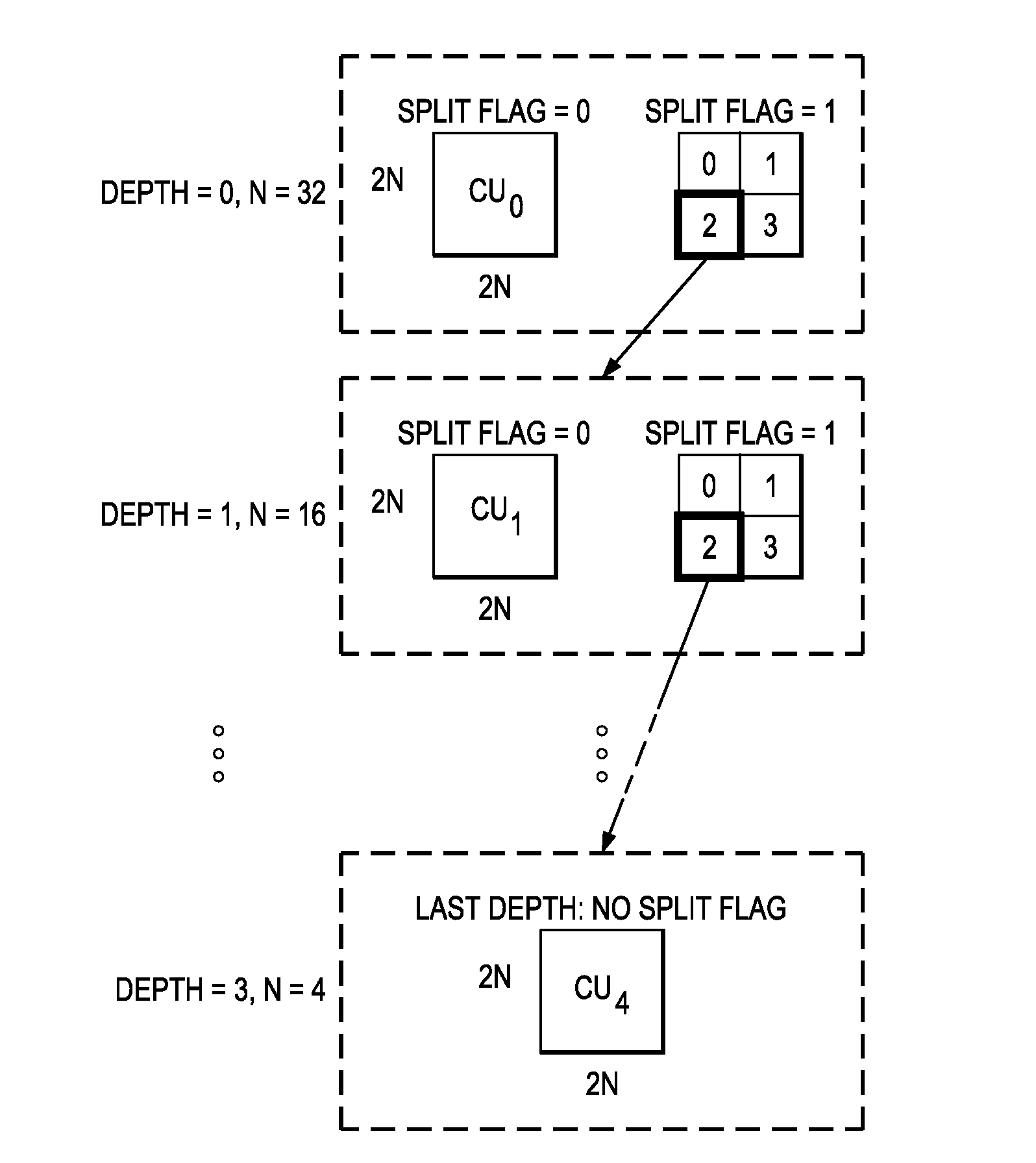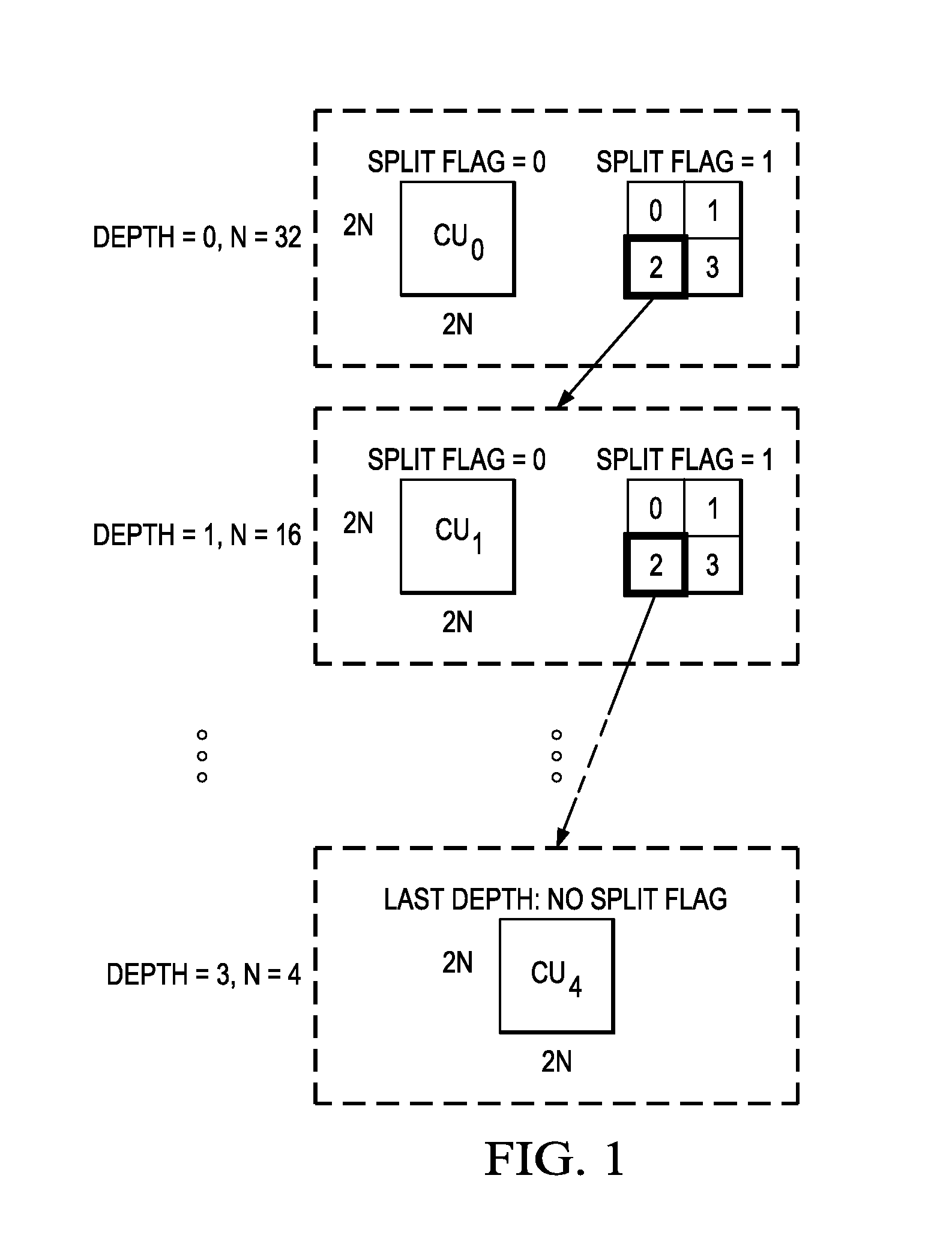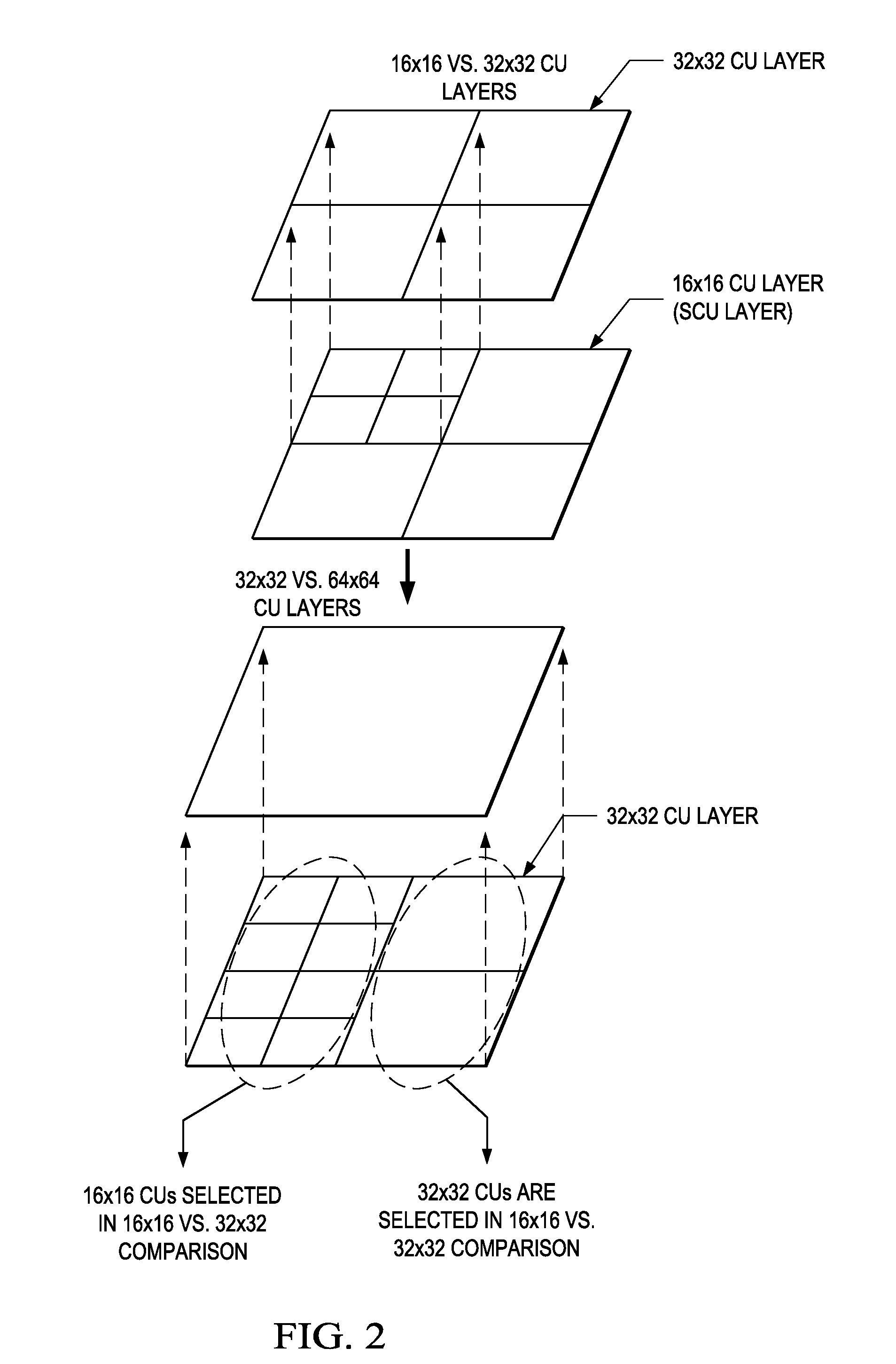Adaptive Coding Unit (CU) Partitioning Based on Image Statistics
a technology of image statistics and adaptive coding units, applied in the field of video coding, can solve the problems of limited computational resources of real-time encoders, add significant computational complexity to the prediction process of encoders, and not allow such an exhaustive search
- Summary
- Abstract
- Description
- Claims
- Application Information
AI Technical Summary
Benefits of technology
Problems solved by technology
Method used
Image
Examples
Embodiment Construction
[0019]Specific embodiments of the invention will now be described in detail with reference to the accompanying figures. Like elements in the various figures are denoted by like reference numerals for consistency.
[0020]As used herein, the term “picture” may refer to a frame or a field of a frame. A frame is a complete image captured during a known time interval. For convenience of description, embodiments of the invention are described herein in reference to HEVC. One of ordinary skill in the art will understand that embodiments of the invention are not limited to HEVC.
[0021]Various versions of HEVC are described in the following documents, which are incorporated by reference herein: T. Wiegand, et al., “WD3: Working Draft 3 of High-Efficiency Video Coding,” JCTVC-E603, Joint Collaborative Team on Video Coding (JCT-VC) of ITU-T SG16 WP3 and ISO / IEC JTC1 / SC29 / WG11, Geneva, CH, Mar. 16-23, 2011 (“WD3”), B. Bross, et al., “WD4: Working Draft 4 of High-Efficiency Video Coding,” JCTVC-F80...
PUM
 Login to View More
Login to View More Abstract
Description
Claims
Application Information
 Login to View More
Login to View More - R&D
- Intellectual Property
- Life Sciences
- Materials
- Tech Scout
- Unparalleled Data Quality
- Higher Quality Content
- 60% Fewer Hallucinations
Browse by: Latest US Patents, China's latest patents, Technical Efficacy Thesaurus, Application Domain, Technology Topic, Popular Technical Reports.
© 2025 PatSnap. All rights reserved.Legal|Privacy policy|Modern Slavery Act Transparency Statement|Sitemap|About US| Contact US: help@patsnap.com



